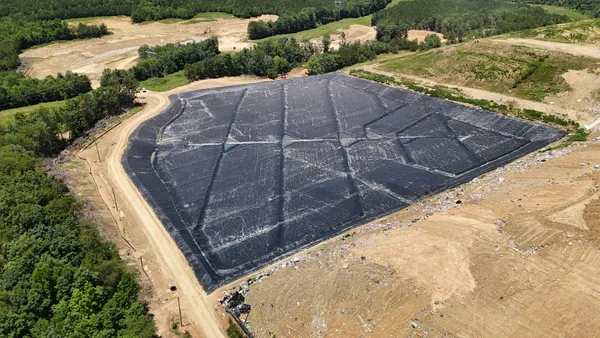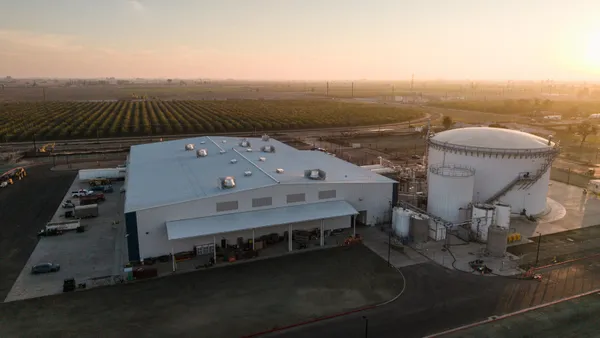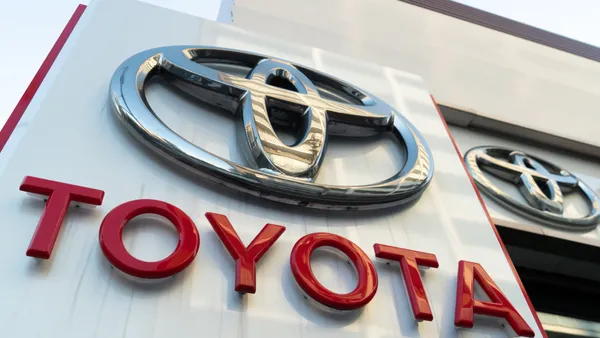Republic Services’ latest round of sustainability reporting was released Tuesday, with signs of progress toward the company’s long-term goals.
The Arizona-based company rolled out multiple new environmental, social and governance targets in 2019, with its greenhouse gas emissions reduction plan later receiving approval by the international Science Based Targets initiative — a certification at least one other competitor is also now pursuing. Republic’s latest Task Force on Climate-related Financial Disclosures report took an expanded look at physical risks within the next decade-plus — specifically how rising temperatures could affect employee safety and changes in precipitation could affect facilities.
Republic also reported on ongoing efforts to cut employee fatalities, improve injury rates, raise employee engagement scores and grow charitable giving levels.
Here is the progress, from 2017 baselines, on its environmental targets through last year:
Goal: Reduce Scope 1 and 2 emissions 10% by 2025, 35% by 2030
Update: 9% reduction from 2017 through 2021
Republic has restated its emissions back to 2017 to account for impacts from acquisitions (amid an active expansion period in recent years), divestitures and adopting the Solid Waste Industry for Climate Solutions emissions accounting standard. SWICS, developed by waste companies and academics in 2007, has already been adopted by some others in the industry who feel it better represents their efforts to mitigate landfill emissions through gas capture and cover practices. Some in the industry feel other modeling tools overstate landfill emissions, while the U.S. EPA has previously disagreed.
Following the recalculation, Republic’s 2020 Scope 1 emissions increased slightly (from 13.21 million metric tons of carbon dioxide equivalent to 14.07 million). The company’s 2021 Scope 1 emissions were 13.64 million, with 11.95 million from landfills and 1.45 million from fleet.
While 21% of Republic’s fleet is currently powered by natural gas, the company is more focused on electrification as a long-term strategy. It reported a handful of electric collection vehicles deployed in Idaho and North Carolina during 2021, with more expected this year.
Goal: Increase beneficial reuse of biogas 50% by 2030, to 110.1 billions of standard cubic feet (bcf)
Update: 76.2 bcf in 2021, up from 72.1 in 2020
Republic reported involvement with 69 landfill gas-to-energy projects through 2021, with 56% of the gas captured last year being flared and 44% used for energy. Going forward, boosted in part by a joint venture with Archaea Energy on 39 renewable natural gas projects, the company aims to be “capturing and beneficially reusing” 70% of its landfill gas by 2027.
Goal: Increase “recovery and circularity” of key materials by 40% on a combined basis by 2030, to 3.4 million tons
Update: 2.6 million tons recovered in 2021, same as 2020
Republic defines these priority commodities as “cardboard, metals, plastics, organics, and paper,” an update from a prior definition that also included “biogas and oil.” Its report touts plans for multiple plastics recycling facilities, including one launching next year in Las Vegas, as a key driver. It also cites growing investments in organics recycling, due in part to policy pushes such as California’s SB 1383 law.
According to a disclosure report, Republic provided recycling service to 75% of its municipal and open market residential customers and 26% of its small- or large-container commercial customers in 2021. Organics service was provided to 25% of residential customers and 2% of commercial customers. In a separate disclosure, Republic estimated a 12.3% diversion rate for recycling and organics from the 47.2 million metric tons of material sent to its own landfills. Overall, Republic managed 101.6 million metric tons of waste in 2021.
Read our ESG report tracker for more on disclosure standards and emissions trends among U.S. waste and recycling companies.















